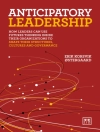An authoritative analysis that employs economic theory, cross-country empirical comparison, and case studies to analyze the effect of currency boards on inflation, output growth and macroeconomic performance.Currency boards, more so than other exchange rate regimes, have come in and out of fashion. Defined by a fixed exchange rate with full convertibility, central bank liabilities backed with foreign exchange reserves, and a high cost of exiting the regime, currency boards were common in colonial times-until most were cast off as countries gained independence after World War II. In the 1990s, currency boards enjoyed a revival as the cornerstone of various macroeconomic stabilization programs-including many in central and eastern European transition economies-only to fall into disfavor again with the collapse of the Argentine regime in 2002. The authors of Currency Boards in Retrospect and Prospect take a balanced look at the effects of currency board regimes on inflation, output growth, and macroeconomic performance more generally. Drawing on historical experience, economic theory, cross-country empirical analysis, and case studies of currency boards in Argentina, Estonia, Lithuania, Bulgaria, and Bosnia and Herzegovina, the authors conclude that currency boards deliver significant reductions in inflation compared to other regimes and do not seem to result in slower growth or a markedly higher vulnerability to crisis.
Helge Berger & Atish R. Ghosh
Currency Boards in Retrospect and Prospect [PDF ebook]
Currency Boards in Retrospect and Prospect [PDF ebook]
Beli ebook ini dan dapatkan 1 lagi PERCUMA!
Bahasa Inggeris ● Format PDF ● Halaman-halaman 280 ● ISBN 9780262286411 ● Penerbit The MIT Press ● Diterbitkan 2008 ● Muat turun 3 kali ● Mata wang EUR ● ID 5660338 ● Salin perlindungan Adobe DRM
Memerlukan pembaca ebook yang mampu DRM












